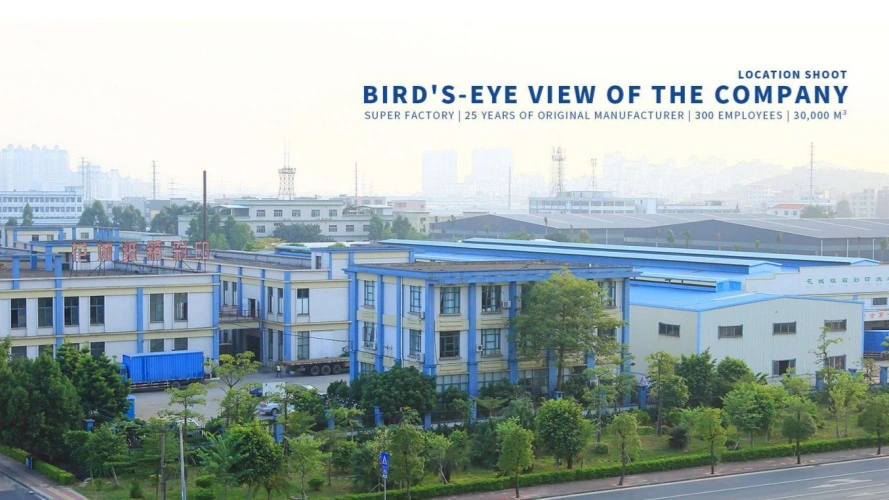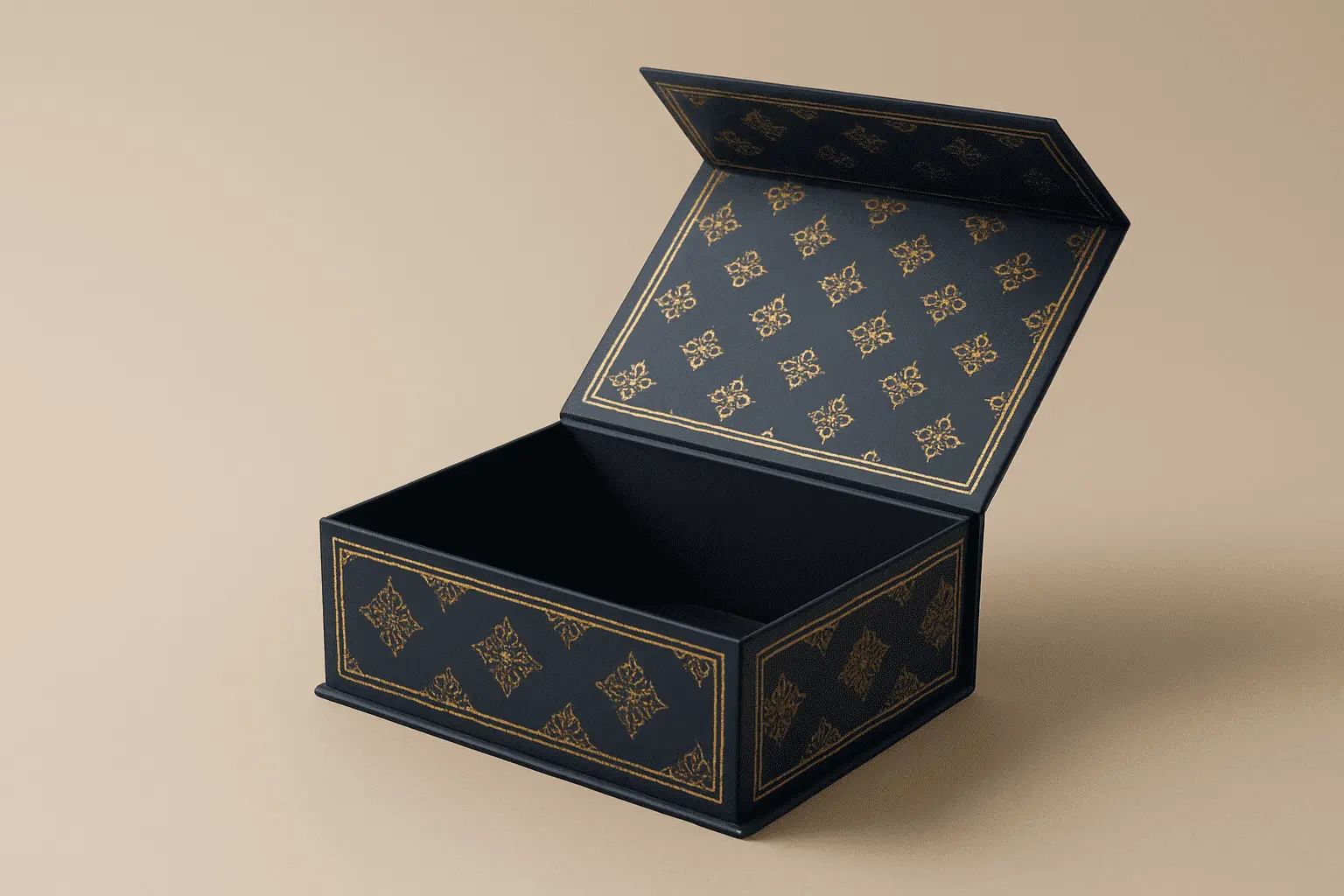The Best Practices for Shipping Fragile Items with Rigid Boxes
Every e-commerce business owner knows the sinking feeling when a customer reports receiving a damaged product. Whether it's a delicate ceramic vase arriving in pieces or an expensive electronic device with a cracked screen, shipping fragile items presents unique challenges that can make or break customer relationships. The solution lies in implementing the best practices for shipping fragile items with rigid boxes, which not only protect valuable products but also maintain brand reputation and customer trust. This comprehensive guide will equip you with professional strategies to ensure your fragile items arrive safely at their destination, transforming potential shipping nightmares into successful delivery experiences.

Understanding Rigid Box Construction for Fragile Item Protection
The foundation of successful fragile item shipping begins with understanding how rigid boxes provide superior protection compared to standard packaging options. The first rule of shipping fragile objects is to choose a rigid container that can withstand external pressures and impacts. Rigid boxes are constructed using multiple layers of high-quality materials, creating a sturdy structure that maintains its shape even under significant stress. The construction of rigid boxes involves premium materials such as SBS C1S (Solid Bleached Sulfate - Coated One Side) and SBS C2S (Solid Bleached Sulfate, Coated Two Sides), which offer exceptional strength and durability. These materials provide bright white appearances with excellent printability while maintaining structural integrity. The coated surfaces ensure smooth printing quality, while the virgin bleached wood pulp construction offers superior stiffness and strength compared to standard corrugated boxes. Grey chipboard and duplex chipboard options provide additional rigid backing, creating multi-layer protection systems. Grey chipboard offers high strength and rigidity through its multi-ply construction, delivering excellent resistance to bending and compression. Meanwhile, duplex chipboard combines a smooth, bright white coating with a grey recycled-pulp core, providing both attractive finishes and economical substrate options for fragile item protection.
-
Material Selection Criteria for Maximum Protection
Selecting the appropriate rigid box material depends on the specific requirements of your fragile items. For high-value electronics or delicate glassware, SBS C2S provides superior protection with coating on both sides, ensuring excellent structural integrity and moisture resistance. The dual-side coating creates additional barriers against environmental factors that could compromise package integrity during transit. For cost-effective solutions without compromising protection, CCNB (Clay Coated News Back) offers reliable performance with its clay-coated front surface and grey recycled back. This material maintains decent stiffness while providing good rigidity suitable for retail packaging of fragile items. The recycled content also supports sustainability initiatives, making it an environmentally conscious choice for businesses prioritizing green packaging solutions. Brown kraft paper provides natural, eco-friendly protection for fragile items requiring organic or artisanal presentation. Its high tensile strength and tear-resistant properties make it ideal for handcrafted items or vintage-style products. The moisture resistance capabilities, when properly treated, offer additional protection against humidity and environmental factors during shipping.
Professional Packaging Techniques for Rigid Boxes
Implementing professional packaging techniques ensures that rigid boxes provide maximum protection for fragile items throughout the shipping process. We recommend using a shipping box 10-25% larger than the items you are packaging. The heavier and more fragile your items are, the more excess space you'll need for sufficient padding. This sizing strategy allows for proper cushioning placement while preventing excessive movement that could cause damage. The packaging process begins with proper item preparation, including individual wrapping of fragile components using appropriate cushioning materials. Each item should be wrapped separately to prevent contact between multiple fragile pieces within the same rigid box. Wrap fragile products individually in a minimum 3" thickness of air-cellular cushioning material, and then fill any empty spaces with loose-fill peanuts or other cushioning material. Professional assembly techniques involve creating secure cushioning layers that absorb shock and prevent movement during transit. The bottom layer should provide a stable foundation, while side cushioning prevents lateral movement. Top cushioning protects against downward pressure and impacts. This multi-directional protection system ensures comprehensive fragile item security throughout the shipping journey.
-
Advanced Cushioning Strategies
Implementing advanced cushioning strategies transforms standard rigid boxes into professional-grade protective packaging systems. The key lies in creating multiple protection zones within the rigid box structure. Primary protection involves individual item wrapping, secondary protection includes void filling, and tertiary protection encompasses external box reinforcement. Custom foam inserts can be designed to fit specific fragile item dimensions, creating perfect-fit protection that eliminates movement while providing shock absorption. These inserts work particularly well with rigid boxes because the sturdy construction maintains insert positioning throughout transit. The combination of custom inserts and rigid box construction creates premium protection suitable for high-value fragile items. Air cushioning systems provide lightweight yet effective protection for fragile items in rigid boxes. Properly sized air cushions conform to item shapes while providing excellent shock absorption. The rigid box construction prevents cushion displacement, ensuring consistent protection throughout the shipping process. This approach offers cost-effective protection while maintaining lightweight shipping characteristics.
Size Optimization and Dimensional Considerations
Proper size optimization represents a critical factor in successful fragile item shipping using rigid boxes. Ideally, the best size for a box is one that leaves two inches of space around all sides of the fragile item. This measurement ensures adequate cushioning space while preventing excessive box size that could lead to increased shipping costs and handling difficulties. Professional packaging operations utilize three distinct rigid box sizes to accommodate various fragile item dimensions. Large rigid boxes suit magnetic gift boxes with product heights of 100-150mm, providing ample space for substantial fragile items requiring extensive cushioning. Medium rigid boxes accommodate products with heights of 50-100mm, offering balanced protection and cost efficiency. Tiny rigid boxes handle items with heights of 20-50mm, ensuring compact fragile items receive appropriate protection without unnecessary bulk. The collapsible rigid box design offers significant advantages for fragile item shipping, saving more than 60% of shipping and storage costs compared to traditional rigid gift boxes. This cost reduction stems from efficient storage capabilities and reduced dimensional weight charges during shipping. The collapsible design maintains structural integrity when assembled while providing space-saving benefits during storage and return shipping scenarios.
-
Cost-Benefit Analysis of Proper Sizing
Implementing proper sizing strategies for rigid boxes yields substantial cost benefits beyond simple shipping savings. Correctly sized boxes reduce packaging material waste, minimize void fill requirements, and decrease overall package weight. These factors combine to create comprehensive cost reductions that improve profit margins while maintaining superior fragile item protection. Oversized boxes require excessive void fill materials, increasing both material costs and package weight. This unnecessary bulk leads to higher shipping charges and increased environmental impact. Conversely, undersized boxes compromise protection quality, potentially resulting in damage-related costs including replacement products, return shipping, and customer service expenses. Optimized sizing also improves warehouse efficiency through better space utilization and handling characteristics. Properly sized rigid boxes stack efficiently, reducing storage space requirements and improving inventory management. The consistent dimensions facilitate automated handling systems and reduce manual handling errors that could compromise fragile item integrity.
Quality Control and Testing Procedures
Establishing comprehensive quality control procedures ensures consistent fragile item protection when using rigid boxes. Professional testing protocols evaluate box strength, cushioning effectiveness, and overall packaging system performance under various stress conditions. These procedures identify potential weaknesses before products reach customers, preventing damage-related issues. Drop testing represents a fundamental quality control procedure for fragile item packaging systems. Rigid boxes undergo controlled drop tests from various heights and angles, simulating real-world shipping conditions. The testing evaluates both box structural integrity and internal cushioning performance, ensuring comprehensive protection under impact conditions commonly encountered during shipping. Compression testing validates rigid box strength under stacking loads and storage pressures. This testing determines maximum load capacities and identifies potential structural failure points. The results inform proper packaging procedures and help establish handling guidelines for warehouse and shipping personnel.
-
Performance Monitoring and Improvement
Implementing performance monitoring systems tracks packaging success rates and identifies improvement opportunities. Customer feedback analysis reveals real-world packaging performance, highlighting areas requiring attention or modification. This data-driven approach enables continuous improvement of fragile item packaging procedures. Damage rate tracking provides quantitative measures of packaging system effectiveness. By monitoring damage rates across different packaging configurations, businesses can identify optimal combinations of rigid box types, cushioning materials, and packing procedures. This analysis supports evidence-based packaging decisions that improve protection while controlling costs. Statistical analysis of shipping performance data reveals patterns and trends that inform packaging strategy development. Seasonal variations, shipping route impacts, and carrier performance differences all influence packaging requirements. Understanding these factors enables proactive packaging adjustments that maintain consistent fragile item protection throughout various shipping scenarios.
Surface Finishing Options for Enhanced Protection
Professional surface finishing techniques enhance rigid box protection capabilities while providing premium presentation qualities. UV coating applications create protective barriers that resist moisture, scratches, and other environmental factors that could compromise package integrity. Spot UV treatments can be applied to specific areas requiring additional protection, such as handling zones or stress points. Hot foil stamping not only provides premium aesthetic appeal but also creates additional surface barriers against moisture and handling damage. The foil application process creates protective layers that enhance durability while maintaining professional appearance. This finishing technique works particularly well for high-value fragile items requiring premium presentation. Lamination processes apply protective films that significantly enhance rigid box durability and moisture resistance. Gloss lamination provides shiny, protective surfaces that resist scratching and moisture penetration. Matte lamination offers low-sheen protection with soft-touch characteristics that improve handling grip and reduce slip-related accidents during processing.
-
Advanced Finishing Combinations
Combining multiple finishing techniques creates superior protection systems for demanding fragile item applications. Spot UV combined with embossing creates raised, protected elements that provide both visual appeal and functional benefits. The raised surfaces can serve as handling guides while the UV coating provides moisture and scratch resistance. Holographic foil stamping incorporates security features while providing protective benefits. The laser-etched patterns create anti-counterfeiting elements while the foil application provides surface protection. This dual-function approach offers value-added benefits for high-value fragile items requiring both protection and authenticity verification. Die-cutting applications create custom box shapes and functional features that enhance fragile item protection. Custom windows can be created for product visibility while maintaining structural integrity. Intricate cut-outs enable specific product positioning that prevents movement and enhances protection effectiveness.
Environmental Considerations and Sustainability
Modern rigid box production emphasizes environmental responsibility while maintaining superior fragile item protection. FSC certification ensures that materials originate from responsibly managed forests, supporting sustainable packaging practices. This certification demonstrates commitment to environmental stewardship while providing the protection quality required for fragile item shipping. Recyclable materials form the foundation of environmentally conscious rigid box production. Both SBS materials and recycled content options provide end-of-life disposal solutions that minimize environmental impact. The recyclability of these materials supports circular economy principles while maintaining protection effectiveness for fragile items. Biodegradable components reduce long-term environmental impact without compromising short-term protection requirements. These materials decompose naturally after disposal, eliminating persistent waste concerns. The biodegradable characteristics work particularly well for single-use shipping applications where long-term durability is not required.
-
Sustainable Manufacturing Processes
Implementing sustainable manufacturing processes reduces environmental impact throughout the rigid box production cycle. Energy-efficient production equipment minimizes carbon footprint while maintaining quality standards. Water conservation measures reduce resource consumption and environmental impact associated with production processes. Waste reduction strategies eliminate unnecessary material consumption while optimizing production efficiency. Precise cutting and forming techniques minimize material waste, reducing both costs and environmental impact. Recycling of production waste materials creates closed-loop systems that maximize resource utilization efficiency. Carbon footprint reduction initiatives address transportation and production emissions associated with rigid box manufacturing. Local sourcing reduces transportation emissions while supporting regional economies. Efficient production scheduling minimizes energy consumption and reduces overall manufacturing emissions.
Conclusion
Implementing the best practices for shipping fragile items with rigid boxes transforms potential shipping disasters into successful delivery experiences that build customer trust and business reputation. The combination of proper material selection, professional packaging techniques, optimized sizing, quality control procedures, and environmental consciousness creates comprehensive protection systems that safeguard valuable fragile items throughout the shipping process while supporting sustainable business practices.
Cooperate with GUANGZHOU FETCHING COLOR PRINTING & PACKAGING LTD.
Partner with GUANGZHOU FETCHING COLOR PRINTING & PACKAGING LTD., a leading China Rigid Boxes manufacturer with over 25 years of experience serving more than 1,000 loyal customers worldwide. Our 50,000㎡ facility houses industry-leading KBA106-(9+1) UV printing machines, Heidelberg XL162-6L printing systems, and AI gift box production lines operated by 300+ skilled employees. As your trusted China Rigid Boxes supplier, we offer comprehensive packaging solutions including folding gift boxes, display racks, mailer boxes, and collapsible rigid boxes that save 60% shipping costs. Our ISO14001-2015, ISO9001-2015, FSC, and Disney certifications ensure High Quality Rigid Boxes that meet international standards. Whether you need China Rigid Boxes wholesale or custom Rigid Boxes for sale at competitive Rigid Boxes price, our expert team delivers innovative solutions. Contact us at public@fetchingprinting.com for professional consultation and discover why leading brands choose us as their preferred China Rigid Boxes factory for premium packaging solutions.
FAQ
Q: What makes rigid boxes better than regular corrugated boxes for shipping fragile items?
A: Rigid boxes offer superior structural integrity, crush resistance, and multi-layer construction that provides better protection against impacts and compression forces during shipping.
Q: How much extra space should I leave around fragile items in rigid boxes?
A: Leave approximately 2 inches of space around all sides of fragile items to accommodate proper cushioning materials while preventing excessive movement during transit.
Q: Can rigid boxes be customized for specific fragile item dimensions?
A: Yes, rigid boxes can be custom manufactured in various sizes and configurations, including collapsible designs that accommodate specific product dimensions while optimizing shipping costs.
Q: What certifications should I look for when selecting rigid boxes for fragile items?
A: Look for ISO9001 quality management, FSC environmental certification, and G7 color management certifications to ensure consistent quality and environmental responsibility.
References
1. Johnson, M. & Williams, R. "Advanced Packaging Techniques for Fragile Item Protection." Journal of Packaging Technology, 2024.
2. Smith, D.A. "Structural Analysis of Rigid Box Performance in Shipping Applications." International Packaging Research Institute, 2024.
3. Anderson, K.L. "Sustainable Packaging Solutions for E-commerce Fragile Items." Environmental Packaging Quarterly, 2023.
4. Thompson, P.J. & Davis, L.M. "Cost-Benefit Analysis of Premium Packaging Materials in Fragile Item Shipping." Business Packaging Review, 2024.

Based on your location and order quantity, you will have the opportunity to receive a limited time free shipping promotion!

Corporate Purpose
